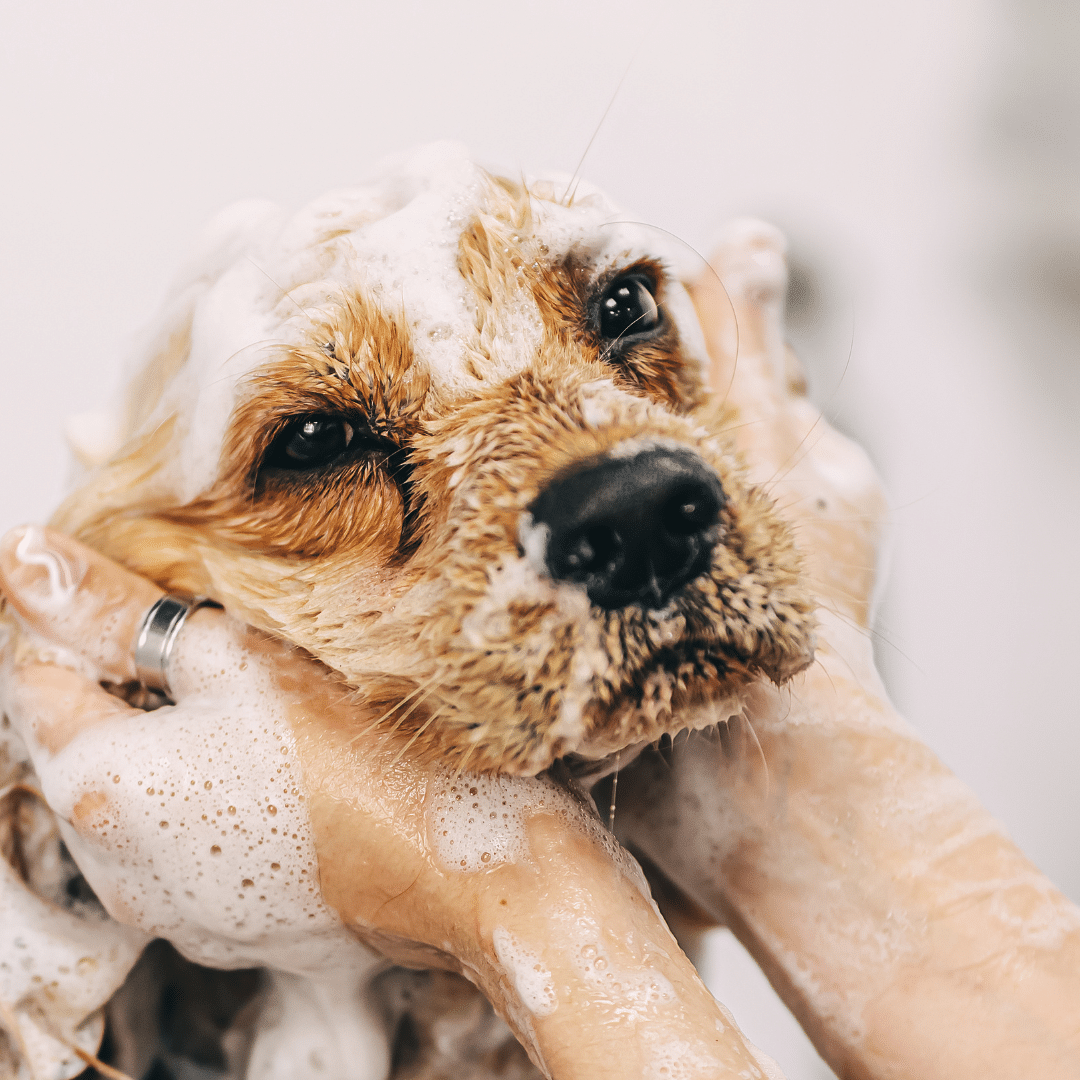Understanding Seasonal Allergies in Pets
As the verdant allure of spring emerges, so too does the subtle menace of allergens, affecting not just humans but our beloved pets. Understanding how seasonal allergies in pets manifest is the first step towards ensuring their comfort and wellbeing. Unlike humans, pets cannot articulate their discomfort, making it imperative for pet owners to be vigilant in recognizing the signs and symptoms of allergies.
Seasonal allergies in pets are primarily caused by environmental factors such as pollen, mold spores, and even dust mites that proliferate during the spring months. These allergens can trigger adverse reactions in our furry companions, leading to a range of symptoms that can impact their quality of life. By equipping ourselves with knowledge and awareness, we can better safeguard our pets against these seasonal afflictions.
Common Symptoms of Spring Allergies in Pets
The telltale signs of spring allergies in pets can vary considerably, often mimicking other health issues, thus requiring a keen eye to discern. Among the most prevalent symptoms are:
- Excessive Scratching and Licking: Pets may incessantly scratch or lick themselves in response to itchy skin, which can lead to secondary infections if left unchecked.
- Red, Irritated Skin: Allergens can cause dermatitis, resulting in inflamed patches of skin that may appear red and irritated.
- Watery Eyes and Sneezing: Much like their human counterparts, pets can experience runny eyes and frequent sneezing as a reaction to airborne allergens.
- Ear Infections: Persistent ear scratching or head shaking may indicate an allergy-induced ear infection, a common affliction in many pets during spring.
Recognizing these symptoms early can be pivotal in preventing more severe discomfort and potential health issues in your pet.
Identifying Allergens That Affect Pets in March
March heralds the onset of spring, a time when various allergens begin to proliferate, posing a threat to our pets’ health. Identifying these allergens is crucial in mitigating their impact. The predominant culprits during this time include:
- Pollen: As trees, grasses, and flowers start to bloom, pollen becomes a ubiquitous presence in the air, easily inhaled by unsuspecting pets.
- Mold Spores: The dampness of early spring provides an ideal breeding ground for mold, with spores readily dispersed into the environment.
- Dust Mites: Though present year-round, dust mites can become particularly problematic during seasonal transitions, exacerbating pet allergies.
By identifying these allergens, pet owners can take proactive steps to minimize their pet’s exposure, such as keeping windows closed during high pollen days and regularly cleaning household surfaces.
The Role of Grooming in Managing Pet Allergies
Grooming plays an indispensable role in managing allergies in pets, offering both relief and prevention from allergen-induced discomfort. Regular grooming not only keeps your pet clean but also helps remove allergens that cling to fur and skin.
To optimize grooming for allergy management, consider these practices:
- Frequent Bathing: Bathing your pet with hypoallergenic shampoos can alleviate itching and wash away allergens from their coat.
- Brushing: Regular brushing helps remove loose fur and prevents the accumulation of pollen and dust on your pet’s skin.
- Paw Care: Wiping your pet’s paws after walks can prevent them from bringing allergens into your home, reducing indoor exposure.
Incorporating these grooming habits into your routine can significantly enhance your pet’s comfort during the allergy season, allowing them to enjoy the splendors of spring with minimal hindrance.
In conclusion, understanding and addressing seasonal allergies in pets is integral to ensuring their health and happiness. By being attentive to the symptoms, identifying allergens, and employing effective grooming techniques, pet owners can provide their furry companions with relief and a better quality of life amidst the challenges of springtime allergies.
Effective Grooming Techniques to Ease Allergy Symptoms
Grooming is not only an essential component of pet care but also a powerful tool in alleviating allergy symptoms. With the onset of spring, allergens like pollen and dust can easily adhere to your pet’s fur, exacerbating their discomfort. Here are some effective grooming techniques to help ease these symptoms:
- Regular Baths: Use a gentle, hypoallergenic shampoo to bathe your pet regularly. This helps remove allergens from their fur and soothe irritated skin. Be cautious not to over-bathe, as it can strip the natural oils from their coat.
- Brushing: Daily brushing is vital, especially for long-haired breeds. It helps eliminate loose hair and prevents allergens from settling on the skin. Choose a brush suitable for your pet’s coat type to maximize effectiveness.
- Ear Cleaning: Allergies can lead to ear infections, so regular cleaning of your pet’s ears can prevent exacerbation. Use a vet-approved ear cleaner to gently wipe away any debris.
By incorporating these grooming practices, you can minimize your pet’s exposure to allergens and provide them with a sense of relief during allergy season.
Additional Tips for Alleviating Pet Allergies
Beyond grooming, there are various strategies pet owners can employ to alleviate their pet’s allergy symptoms. These tips focus on creating an allergen-reduced environment and enhancing your pet’s overall comfort:
- Dietary Adjustments: Consider incorporating omega-3 fatty acids into your pet’s diet. These nutrients can help reduce inflammation and strengthen your pet’s skin barrier.
- Air Purifiers: Using air purifiers with HEPA filters can significantly reduce airborne allergens in your home, providing a cleaner breathing environment for your pet.
- Regular Cleaning: Frequent vacuuming and dusting can help remove allergens from floors and surfaces. Opt for vacuum cleaners with HEPA filters for optimal results.
- Limit Outdoor Exposure: On days with high pollen counts, try to limit your pet’s outdoor activities. When they do go outside, wipe their paws and fur upon returning indoors to reduce allergen carryover.
These additional steps can complement grooming efforts, ensuring your pet remains as comfortable as possible during allergy season.
When to Consult a Veterinarian for Pet Allergies
While many allergy symptoms can be managed at home, there are situations where professional veterinary intervention becomes crucial. If your pet’s symptoms persist or escalate despite your efforts, it’s important to seek veterinary advice. Specifically, consult a veterinarian if you notice:
- Persistent Itching: If your pet is continually scratching or biting themselves to the point of skin damage, professional treatment may be necessary to prevent infections.
- Respiratory Issues: Labored breathing, wheezing, or chronic coughing could indicate severe allergic reactions or other underlying health concerns.
- Unexplained Weight Loss or Lethargy: Significant changes in weight or energy levels may signal that allergies are impacting your pet’s overall health.
Veterinarians can provide targeted treatments such as antihistamines, corticosteroids, or specialized diets to help manage your pet’s allergies more effectively. Timely consultation ensures your pet receives the care they need to thrive during allergy season.








Recent Comments